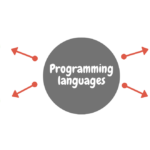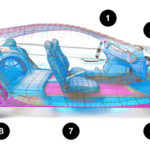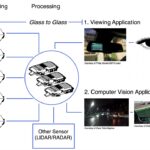 The MIPI Alliance announced the release of MIPI A-PHY v1.1, the next version of the automotive serializer-deserializer (SerDes) physical-layer interface. Version 1.1 doubles the maximum available downlink data rate from 16 Gigabits per second (Gbps) to 32 Gbps and includes other enhancements to help automotive OEMs and their suppliers implement high-performance image sensors and displays in next-generation vehicles.
The MIPI Alliance announced the release of MIPI A-PHY v1.1, the next version of the automotive serializer-deserializer (SerDes) physical-layer interface. Version 1.1 doubles the maximum available downlink data rate from 16 Gigabits per second (Gbps) to 32 Gbps and includes other enhancements to help automotive OEMs and their suppliers implement high-performance image sensors and displays in next-generation vehicles. MIPI A-PHY, originally released in September 2020, is the first industry-standard, long-reach, asymmetric SerDes interface to provide high-performance links between automotive image sensors and displays and their associated electronic control units (ECUs). It was developed to simplify the integration of greater numbers of onboard sensors and displays for applications such as advanced driver-assistance systems (ADAS), digital cockpits, in-vehicle infotainment (IVI), and autonomous driving systems (ADS).
A-PHY offers a reach of up to 15 meters, unprecedented reliability with an ultra-low packet error rate of 10-19 over a vehicle’s lifetime, high noise immunity, and ultra-low latency. It also forms the foundation of MIPI’s Automotive SerDes Solutions (MASS), an end-to-end framework for connecting cameras, sensors, and displays with built-in functional safety, security, and data protection.
A-PHY v1.1 doubles the total downlink bandwidth from 16 to 32 Gbps by adding support for Star Quad (STQ) cables that provide dual differential pairs of conductors within a single shielded jacket. This enables two A-PHY ports over a single cable, saving cost, weight, and complexity compared with using two separate coaxial or shielded twisted pair cables.
Version 1.1 also adds optional PAM4 encoding for A-PHY downlink gears G1 and G2, with data rates of 2 Gbps and 4 Gbps, respectively. PAM4 encoding features lower modulation bandwidth for sub-1 GHz operation, allowing manufacturers to migrate to A-PHY while using either legacy cables on current platforms or lower-cost cables on new platforms.
The new version also adds a faster uplink gear with an available data rate of up to 200 Mbps, twice the rate of the existing uplink gear, providing more bandwidth for command and control of automotive peripherals. A-PHY v1.1 is fully interoperable with A-PHY v1.0, and devices using both specifications can coexist on the same network.
These enhancements enable automotive manufacturers to design next-generation applications that use the latest camera and display technologies, including higher-performance instrument clusters and infotainment displays, interior driver and passenger monitoring systems, virtual side mirrors, and other ADAS, IVI, and ADS applications.





Leave a Reply